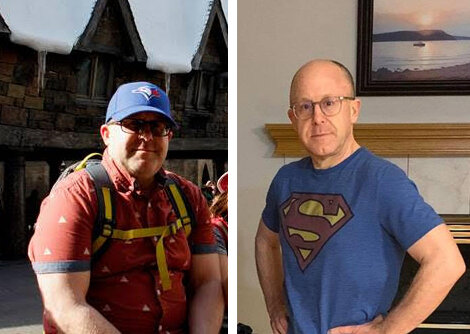Gut health is an immensely important and popular topic that is also extraordinarily complex for the simple reason that every gut is unique. Our gastrointestinal tracts work hard to keep us healthy and happy. When gut health is compromised, we can face major health consequences.
Because of the presence of bacteria and other microorganisms in your gastrointestinal system, it plays an enormous role in how we feel. Maintaining a balance of “good” bacteria is essential to proper digestion and overall health. It’s important to be informed about what goes into your digestive system in order to maintain a healthy gut.
Each and every one of us responds to different foods in different ways, which is why it is so challenging to provide generic guidance on the foods that may benefit any individual gut. Our gut can be a source of sensory feedback; we are able to perceive things subconsciously before our conscious minds do and we’ll feel it (where else?) but in our gut. This is no accident. Our digestive tract and our central nervous system are intimately linked and you can’t optimize health of one at the expense of the other.
Microbiota are the trillions of bacteria that reside in the gastrointestinal tract. They’re critical for immune function, digestion, nutrient production, and overall gut health. More recently, microbiota have been shown to influence our mental state, too, impacting psychological and emotional well-being. They can affect our outlook, our capacity to respond to stress and possibly the strength of our memory.
It’s well established that bacterial diversity rules in the gut: study after study of intestinal microbiota composition shows that groups of people with a disease have a less diverse gut microbial community than groups without the disease. In some cases, the lack of diversity is referred to as a dysbiosis. The tricky part is figuring out how the principle of gut microbiota diversity can be used to improve human health.
FODMAP substances are found in the foods we eat. FODMAP is an acronym which stands for “Fermentable Oligosaccharides, Disaccharides, Monosaccharides and Polyols.” These are complex names for a collection of molecules found in food that can be poorly absorbed by some people. When the molecules are poorly absorbed in the small intestine of the digestive tract, these molecules then continue along their journey in the digestive tract, arriving at the large intestine, where they act as a food source to the bacteria that live there normally. The bacteria then digest/ferment these FODMAPs and can cause symptoms of Irritable Bowel Syndrome (IBS).
Symptoms of IBS include abdominal bloating and distension, excess wind (flatulence), abdominal pain, nausea, changes in bowel habits (diarrhea, constipation, or a combination of both) and other gastro-intestinal symptoms.
Where are FODMAPs found?
A few examples of food sources for each of the FODMAPs are listed below. The list is not complete. During a consultation, a registered dietitian can provide you with an up-to-date list of foods.
• Excess fructose: Honey, apple, mango, pear, watermelon, high fructose corn syrup, corn syrup solids
• Fructans: Artichokes (globe, Jerusalem), asparagus, beetroot, chicory, dandelion leaves, garlic (in large amounts), leek, onion (brown, white, Spanish, onion powder), spring onion (white part), wheat
(in large amounts), rye (in large amounts), inulin, fructo-oligosaccharides
• Lactose: Milk, ice cream, custard, dairy desserts, condensed and evaporated milk, milk powder,
soft un-ripened cheeses (ricotta, cottage, cream, marscarpone)
• Galacto-oligosaccharides (GOS): Legume beans (baked beans, kidney beans), lentils, chickpeas
• Polyols: Apples, apricots, avocado, cherries, longon, lychee, nectarines, pears, plums, prunes, mushrooms, sorbitol, mannitol, xylitol, maltitol and isomalt
What can I eat on a low FODMAP diet? For expert diet advice, please book an appointment.
More studies on diets are needed. But we do know this: whether you’re talking about trees, insects or gut microorganisms, an ecosystem is at its best as a tangled web of interdependent relationships. And if diversity is the name of the game, pay attention to your diet.
FODMAP Oatmeal Breakfast
This lovely, high fiber, low FODMAP oatmeal breakfast (also gluten-free!) will keep you going all morning! Off to a great start! If you don’t like warm breakfasts, just use this recipe to make yourself overnight oats.
COOK TIME 5 mins
TOTAL TIME 5 mins
SERVINGS 1 person
Ingredients:
-
40 grams oats
-
200 ml almond milk
-
15 grams peanut butter
-
15 grams flaxseed use ground flaxseeds.
-
10 grams sunflower seeds
-
10 grams pumpkin seeds
-
3 brazil nuts
-
maple syrup
-
ground cinnamon
Warm Oatmeal
-
Take a small pot. Fill it with 40 grams of oats, 200 ml of almond milk and a dash of ground cinnamon. Place the pot on the stove on medium fire.
-
While the oatmeal heats up, put the peanut butter, flaxseed, sunflower seeds, pumpkin seeds and Brazil nuts in a bowl. Stir the oatmeal in the pot occasionally.
-
Once the oatmeal has heated and thickened enough (you can generally see bubbles start to form, the desired thickness can vary per person) put the oatmeal in the bowl and mix with the other ingredients. Drizzle a little bit of maple syrup on top and enjoy!
Overnight Oats
-
If you like your breakfast cool in the morning. Combine all the ingredients, except for the maple syrup and peanut butter, in a jar (for example an empty jam jar) the night before and put it in the fridge. The next morning, just add some maple syrup and the peanut butter and your breakfast is good to go!





 | Website Design Calgary
| Website Design Calgary